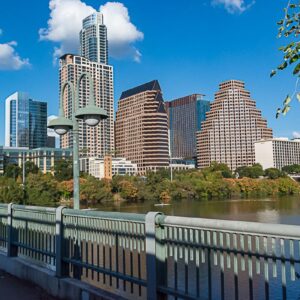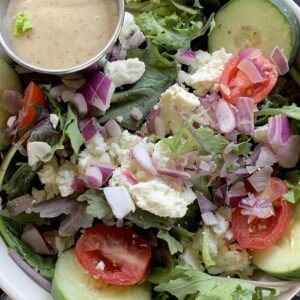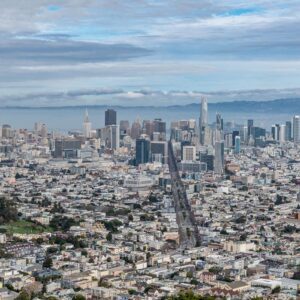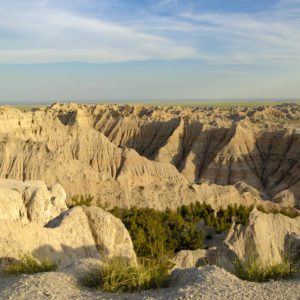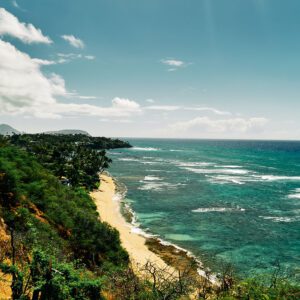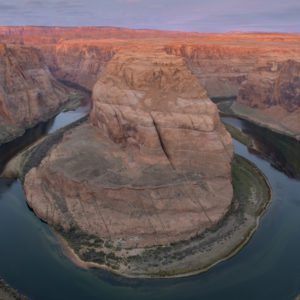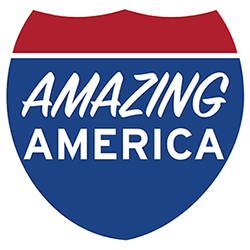A glitzy emerald metropolis surrounded by the great outdoors, Seattle, Washington is a mix of rugged hardiness, edgy innovation, and quirky creativity.
The home base for Boeing, Microsoft, and Amazon is fondly beloved from hosting the 1962 World’s Fair, which left as legacies the iconic Space Needle and Seattle Center Monorail. Central Seattle is anchored by Pike Place Market, the country’s oldest continuously operating public market, while a fleet of state-run ferries can whisk you away to the varied islands within Puget Sound. The birthplace of grunge music as always been a place to be your authentic self, making it seem that anything is possible in Seattle.
The land that forms today’s city of Seattle was once inhabited by the Coast Salish tribes. The pioneering Denny party settled on Alki Point in 1851, naming their new home for Duwamish Chief Sealth. Henry Yesler’s lumber mill dominated the early settlement and, in 1897, the town boomed as it became the main supplier for those seeking fortune in the Klondike Gold Rush.
Today, Seattle balances its key role in Pacific Rim commerce with an authentic pride in enjoying the beauty and bounty of one’s hometown and surrounds. In this guide, our primary focus is on Seattle’s best parks, monuments, landmarks, and museums. We also showcase some of Seattle’s most popular visitor attractions as well as its beloved and iconic neighborhoods.
Seattle’s Monorail, Space Needle, and Seattle Center Campus
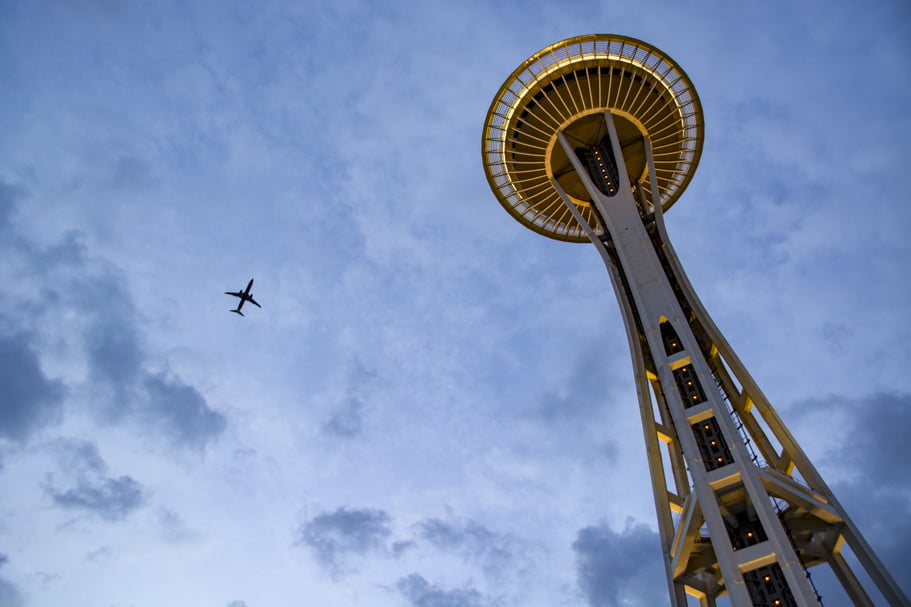
The Space Needle in Seattle, Washington on July 8. 2016. Photo by Peter Stringer
Seattle is practically synonymous with its 605-foot-tall futuristic Space Needle, the 1962 World’s Fair icon turned observation tower that was once the tallest structure west of the Mississippi River. From an observation deck at 520 feet, views extend to the Cascade and Olympic mountain ranges that frame the city, as well as over Puget Sound and its multitude of small islands. The space-themed World’s Fair also brought the city its beloved monorail, a one-mile elevated track ride from the the downtown core to what is today’s 74-acre Seattle Center campus.
Within the civic campus are found the Pacific Science Center, repurposed from its World’s Fair days as the U.S. Science Exhibit into a scientific discovery museum. The distinctive Museum of Pop Culture (MoPop)—shaped like a smashed guitar— started its existence as the Experience Music Project, the brainchild of Microsoft co-founder Paul Allen. Rebranded into MoPop, exhibits are in frequent flux, with topics ranging from different genres of music to science fiction and fantasy to film to video gaming.

Nirvana exhibit at the Museum of Pop Culture in Seattle
The Chihuly Garden and Glass is a newer attraction at the base of the Space Needle that interactively showcases in eight galleries the inspiration and influences of local glassblower, Dale Chihuly.
Seattle’s Waterfront, Pike Place Market, and Seattle Art Museum (SAM)
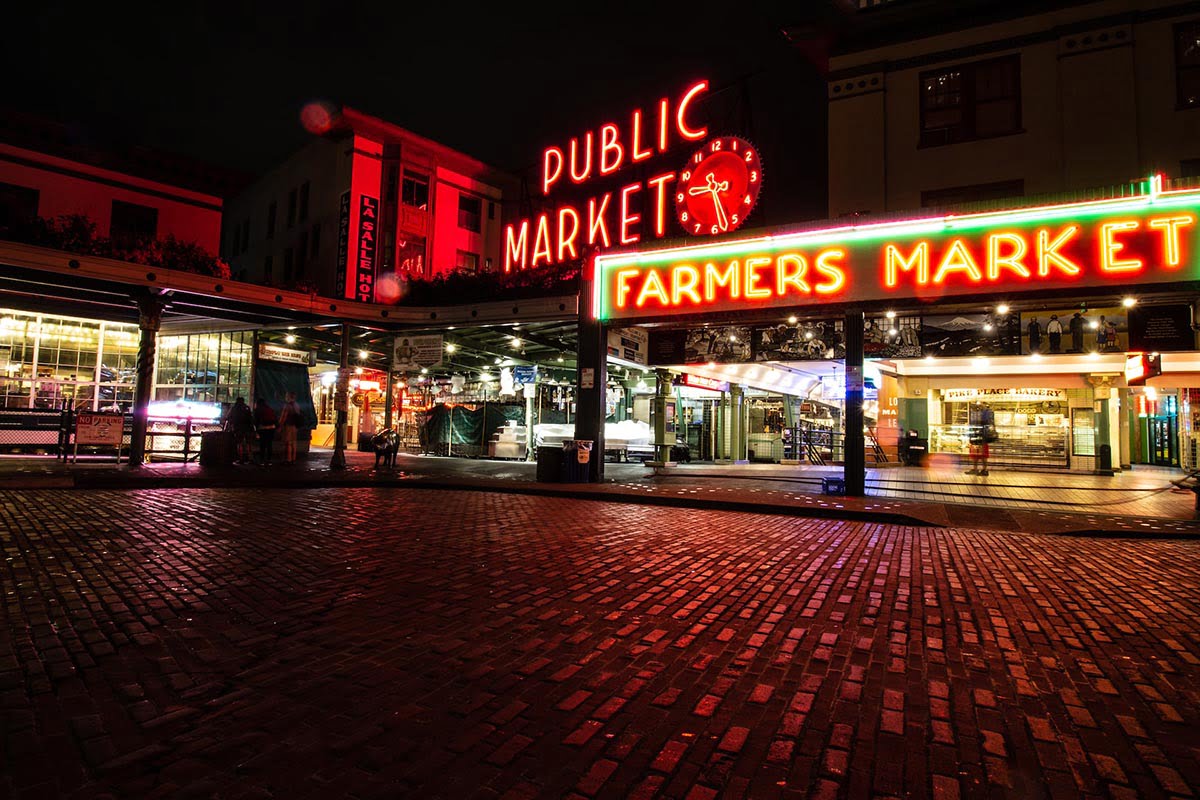
Pike Place Market in Seattle, Washington at night. Stock photo by Ryan Stone via Unsplash.
Nestled along the shore of Puget Sound, Seattle’s mile-long waterfront bustles with activity. Piers are repurposed here into eateries, souvenir shops, and popular attractions, though some do still function as embarkation points for day boats; state-run ferries travel to the sound’s many islands, and longer cruises to Alaska’s Inside Passage. A longtime favorite on the waterfront, the Seattle Aquarium hosts exhibits showcasing local marine life while the newer addition, the Seattle Great Wheel, at 175 feet, is one of North American’s tallest Ferris wheels.
Just uphill from the sound and perhaps the center of town in many hearts is Pike Place Market, holding the title of the nation’s oldest continuously operating public market. The nine-acre, eight building market dates to 1907, founded to allow farmers and fisherman to sell directly to their buyers. The rambling market sells not just produce and seafood (this is where you’ll find the famous thrown salmon), but also books, collectibles, locally made art, jewelry, pottery, and many other useful and gift items. A block away from the market’s main entrance, and you’ll see where Starbucks Coffee got its humble start.
Within arm’s reach of both the waterfront and the market are two of the three facilities of the Seattle Art Museum (SAM). A kinetic sculpture, Hammering Man, guards the entrance of the downtown facility, which houses four floors of galleries containing art pieces from The Americas, Africa, and the Mediterranean. Along the waterfront lies the linearly arranged Olympic Sculpture Garden, while the Art Deco building housing the Seattle Asian Art Museum is in Capitol Hill.
Pioneer Square and the International District
Pioneer Square marks the earliest organized downtown core of Seattle where Henry Yesler’s lumber mill once operated, as well as the nearby “Skid Road.” After a fire in 1889, the square and surrounding area was rebuilt with Victorian and Edwardian structures, many of which were preserved in the 1960s. At the same time, the square was elevated one story, making for an “underground” that can be explored on popular guided tours. Today, Pioneer Square houses art galleries, shops, and a visitor center for the Klondike Gold Rush National Historical Park.
Next door to Pioneer Square is the International District, since the 1890s serving as the center of Seattle’s Chinese population, many of whom worked building the city’s early railroad infrastructure. A 20-year span brought arrivals from Japan and other Asian nations. Highlights of the district include Mt Fuji cherry trees within the Kobe Terrace green space and the flagship Uwajimaya supermarket.
Additional Seattle Museums
MOHAI and the Center for Wooden Boats: Providing an overview of what makes Seattle Seattle, MOHAI (the Museum of History and Industry) is situated along the south end of Lake Union. Exhibits cover the city’s history from the Duwamish times to today’s tech industry. Next door, the Center for Wooden Boats shares maritime history of the Pacific Northwest as well as offering boats to rent for a day on the lake.
Burke Museum of Natural History and Culture: Located on the University of Washington campus, the Burke Museum of Natural History and Culture is Washington’s state’s oldest museum. Started by a pair of young naturalist collectors, the Burke has gathered over the years an impressive catalog of dinosaurs and other fossils, Native Northwest art and cultural pieces, plant and animal specimens including the largest assemblage of fixed bird wings, totem poles, gemstones, and more.
Seattle’s Notable City Parks
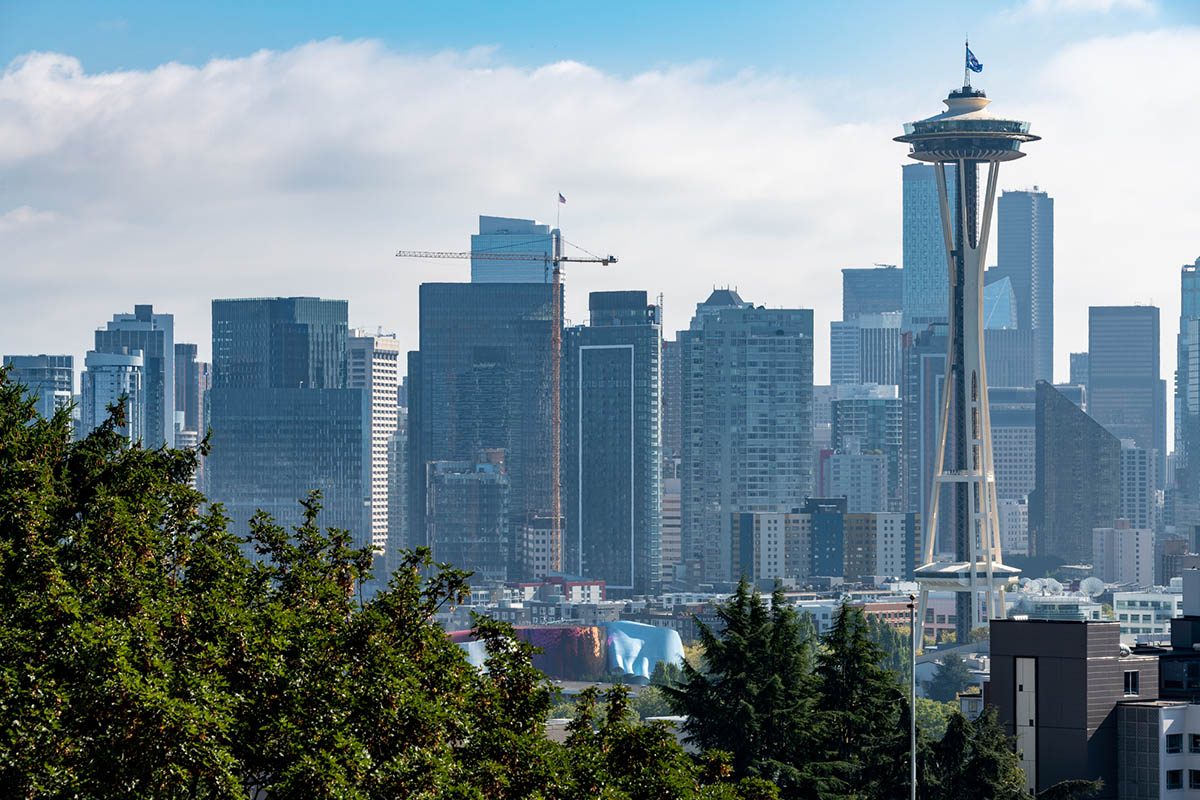
The Seattle skyline from Kerry Park in Seattle, Washington on October 5, 2020. Photo by Peter Stringer for Amazing America.
Kerry Park: This pocket-size park on Queen Anne hill is regarded as one of the best places to get the classic view of the city skyline; the park came into existence as a result of neighbors’ efforts to protect said view. Kerry Park is only a mile north of the space needle, and vistas can extend to the Olympic Range and Mt Rainier.
Discovery Park: Seattle’s largest park (over 500 acres), Discovery Park in the Magnolia neighborhood northwest of downtown, features an extensive trail network (over 10 miles), a sandy Puget Sound beach, retired army structures that once made up Fort Lawton, and the photogenic West Point Lighthouse. In a park this size, there’s quite a lot of variety, and Discovery Park affords a chance to experience much of Seattle’s natural beauty in one package.
Volunteer Park: This forty-acre park on Capitol Hill was designed by renowned landscape architect John Olmstead, and is regarded as one his best. Volunteer Park is home to the Volunteer Park Conservatory—a Victorian era greenhouse with five distinct environments within—and SAM’s Asian Art Museum. There’s also a reservoir with a historic water tower outfitted with an observation deck- another great spot for a city view.
Gas Works Park: One of Seattle’s more unique parks, Gas Works Park on Lake Union’s north shore, inhabits the repurposed site of an early 1900s Seattle Gas Light Company oil-gasification plant. Originally chosen as an ideal park location by John Olmstead for its view of the city below, a city park was born fifty years later that incorporates some of the plant’s retired equipment into play structures. Gasworks Park also sports a Grand Mound that serves as a ‘kite flying hill’ and is topped with an analemmatic sundial—when you stand on the date marked, your shadow reads the time.
Ballard Locks: Lake Washington Ship Canal and Fish Ladder plus Botanic Gardens
Officially named the Hiram M. Chittenden Locks, the passage more commonly called the Ballard Locks is a conduit for boaters large and small to pass between the city’s two large freshwater lakes—Lake Union and Lake Washington—and the salty Puget Sound. A section of the Lake Washington Ship Canal, the locks are the nation’s busiest, and raise or lower boats twenty feet. Simply watching the boats lock through is one popular activity, but the Ballard Locks are also unique for having their own fish ladder to assist migrating salmon. Construction of the locks affected existing salmon runs, and thus a 21-step ladder was installed with windows that allow the public to watch fish as they pass by. Surrounding the locks is Carl S. English Jr. Botanic Gardens, a seven-acre English estate-styled garden with over 1,500 plant varieties.
Additional Iconic Seattle Neighborhoods
Belltown: Young and trendy Belltown sits upon a waterfront area created in one of Seattle’s early regrading projects. Adjacent to downtown and densely populated, Belltown has an artsy-industrial vibe and is one of the best places to simply wander and explore Seattle’s hottest eateries, galleries, boutiques, and nightlife. Belltown was once known as Film Row and today the vintage Cinerama theatre is a beloved landmark.
Capitol Hill: One of Seattle’s steepest districts (grades reach 21% on some streets), Capitol Hill is home to both tree-lined “Millionaire Row” and a large assemblage of tall apartment towers, including some in a Classical Revival style. Dense and urban, Capitol Hill’s thoroughfares are lined with eateries, shops, and a variety of entertainment options. Originally named in hopes that the state’s capital would move to Seattle from Olympia, Capitol Hill has shifted from its quiet and conservative roots to become a hub of counterculture. In a city known for coffee, Capitol Hill is home to some of the best independent coffeehouses as well as one of only five Starbucks Reserve Roasteries. Another favorite establishment since 1973 is Elliott Bay Books, boasting 150,000 new titles.
Fremont: Perhaps most known for the Scandinavian folklore-inspired 18-foot tall “Fremont Troll” sculpture that resides and crushes a VW bug under the George Washington Memorial (also called Aurora) Bridge, Fremont is Seattle’s epicenter of quirky. Bohemian boutiques abound as well as public art in many forms. Most noteworthy are a statue of Vladimir Lenin scavenged from Slovakia, the Center of the Universe Signpost, and a 54 foot tall 1950’s Fairchild C-119 rocket fuselage dubbed the Fremont Rocket. Signs in Fremont advise one to “set your watch back five minutes,” “set your watch forward five minutes,” and then “throw your watch away.”
On Seattle’s Doorstep
Olympic National Park (2.5 hours): Composed of nearly a million mostly roadless acres, Olympic National Park is centered on Mt. Olympus though perhaps is best known as the home of North America’s largest temperate rainforest. Lesser known is the fifty miles of rugged Pacific coastline on the western edge of the park. From Seattle, travel west to Port Angeles, crossing the warm and dry side of the peninsula and the lavender fields around Sequim. There’s a park visitor center in town and another at Hurricane Ridge, 17 miles south. Hurricane Ridge is an easily accessed 5,000 foot elevation formation with views as far as Vancouver Island in Canada. You’ll need to return to Port Angeles and head counterclockwise to your next spot, Lake Crescent, a glacially carved body of water famed for its clear waters and pristine shoreline. A historic lodge and boat tours are features at Lake Crescent. Your final stop in the park should be Sol Duc Falls, rated one of Washington’s top three waterfalls.
Mt Rainier National Park (2 hrs): Seattle’s hometown mountain, Mt Rainier National Park is the tallest in the Cascade range and forms the center of one of the country’s oldest national parks. The peak boasts over 25 glaciers and is circled by the 93 mile long Wonderland Trail. The most popular destination for visitors is Paradise (5,400 ft. elevation), where the Paradise Inn and the Henry M Jackson Visitor Center can be found. The Skyline Trail to Panorama Point (5 mile loop) showcases subalpine meadow wildflowers and affords views of Mt. St Helens, Mt. Adams, and Mt. Hood. Another worthy stop is Longmire (2,700 ft. elevation), nestled within forests of old growth Douglas Fir, western hemlock, and western red cedar, and home of the National Park Inn and the Longmire Museum.
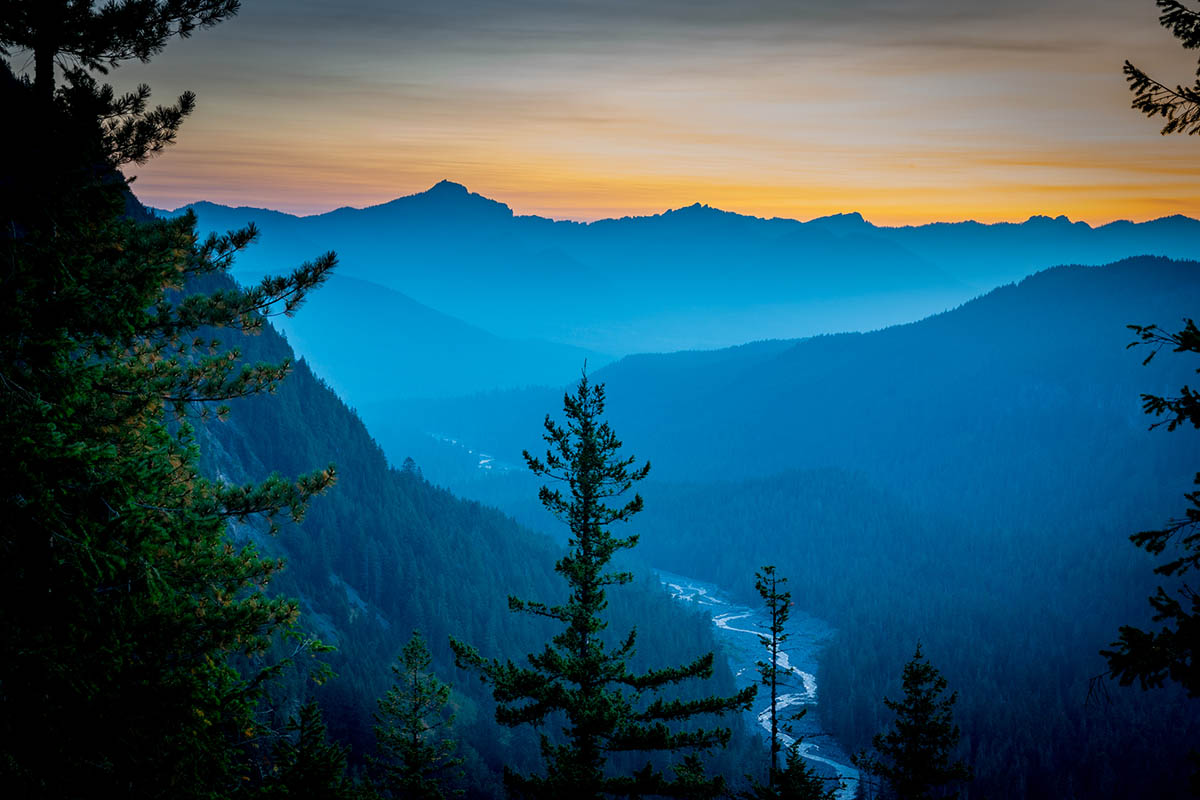
Ricksecker Point in Mt. Rainier National Park in Ashford, Washington on October 2, 2020. Photo by Peter Stringer for Amazing America.
Mt. St. Helens National Volcanic Monument (2.5 hours): A unique monument created in the aftermath of the 1980 eruption, Mt. St. Helens is a dramatic journey into a recovering landscape. Stop first at the visitor center at Silver Lake, where exhibits highlight the history of the area and photographs document the day of the eruption. The road winds through tree farms until it reaches the park boundary, where you’re suddenly plunged into what was the eruption’s blast zone. At the end of the highway is the Johnston Ridge Observatory, lying only five miles from the mountain’s crater. Mt. St. Helens is still highly active and Johnston Ridge is the best place to see vulcanism in action.
Islands of Puget Sound (1-1.5 hours): Puget Sound is large, extending a hundred miles long from Olympia to Canada. An inlet of the Pacific Ocean, the sound claims roughly 35 visitable islands. While a few have a road or bridge connection, many are accessed only by boat with the most popular seeing regular service through the Washington State Ferry system.
Bainbridge: With a small-town feel, there are three local weekly newspapers, post offices, commercial shops, restaurants, and grocery stores. Bainbridge Island School District houses six public schools with an additional six private schools. This area is also concerned with preserving the local nature and greenspace of the island, so there is control over the amount of development that happens in this community.
Blake Island: This island lies south of Bainbridge Island and is preserved as Blake Island Marine State Park Tillicum Village, located on the northeast side of the island, is rich with Northwest Native culture, food, and art.


